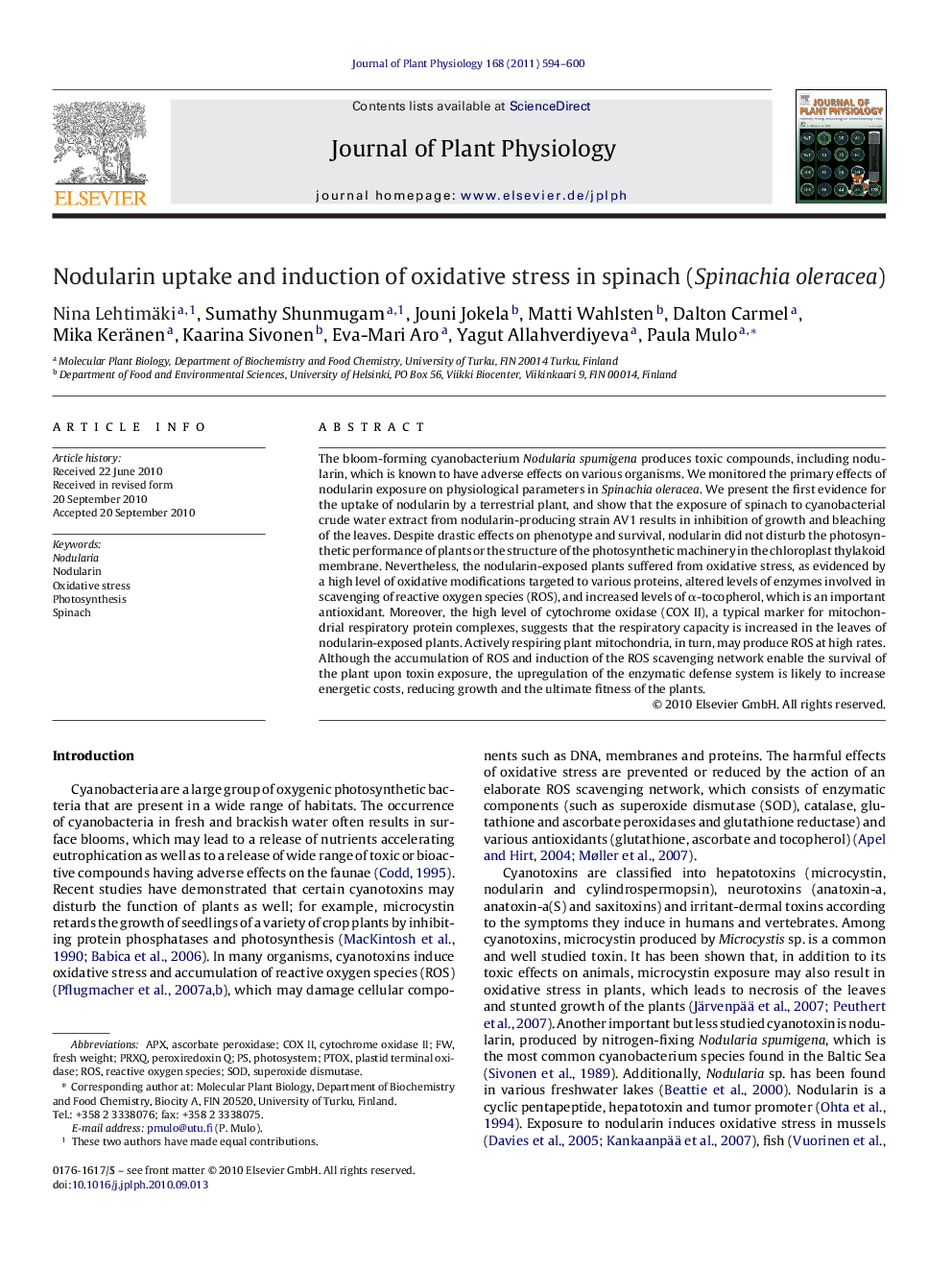| Article ID | Journal | Published Year | Pages | File Type |
|---|---|---|---|---|
| 2056714 | Journal of Plant Physiology | 2011 | 7 Pages |
The bloom-forming cyanobacterium Nodularia spumigena produces toxic compounds, including nodularin, which is known to have adverse effects on various organisms. We monitored the primary effects of nodularin exposure on physiological parameters in Spinachia oleracea. We present the first evidence for the uptake of nodularin by a terrestrial plant, and show that the exposure of spinach to cyanobacterial crude water extract from nodularin-producing strain AV1 results in inhibition of growth and bleaching of the leaves. Despite drastic effects on phenotype and survival, nodularin did not disturb the photosynthetic performance of plants or the structure of the photosynthetic machinery in the chloroplast thylakoid membrane. Nevertheless, the nodularin-exposed plants suffered from oxidative stress, as evidenced by a high level of oxidative modifications targeted to various proteins, altered levels of enzymes involved in scavenging of reactive oxygen species (ROS), and increased levels of α-tocopherol, which is an important antioxidant. Moreover, the high level of cytochrome oxidase (COX II), a typical marker for mitochondrial respiratory protein complexes, suggests that the respiratory capacity is increased in the leaves of nodularin-exposed plants. Actively respiring plant mitochondria, in turn, may produce ROS at high rates. Although the accumulation of ROS and induction of the ROS scavenging network enable the survival of the plant upon toxin exposure, the upregulation of the enzymatic defense system is likely to increase energetic costs, reducing growth and the ultimate fitness of the plants.
